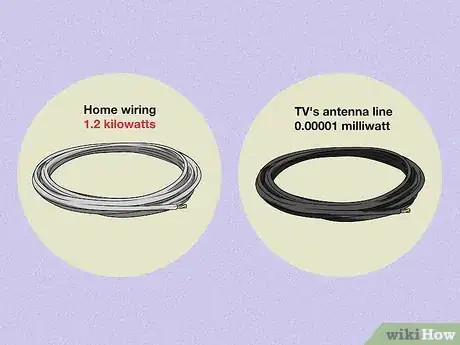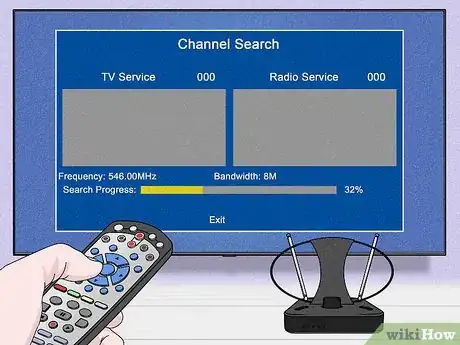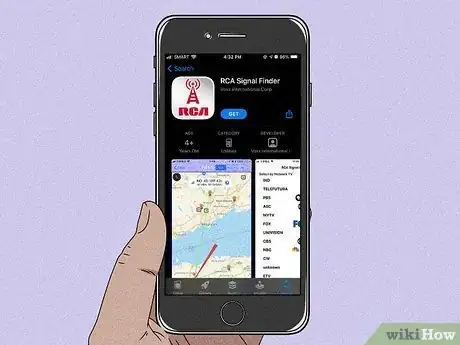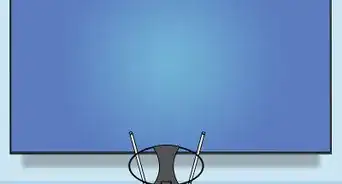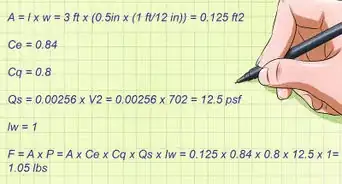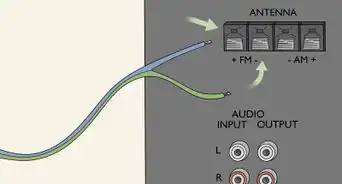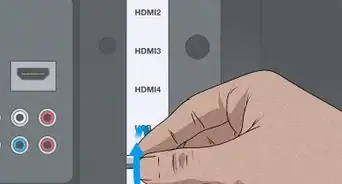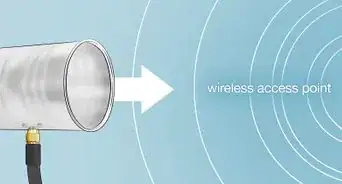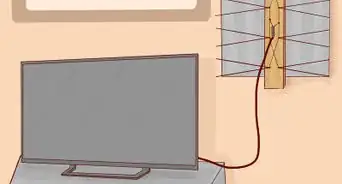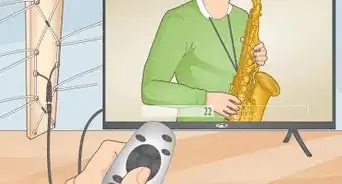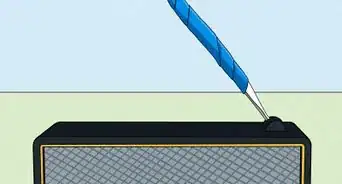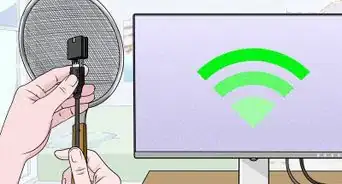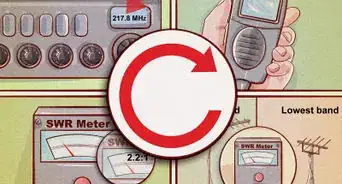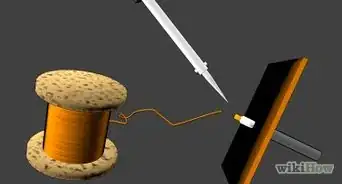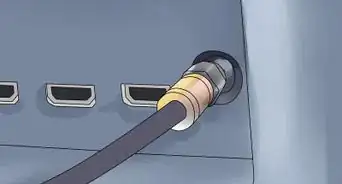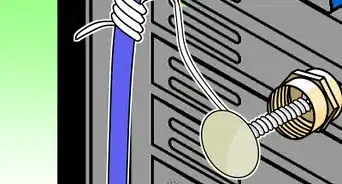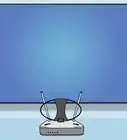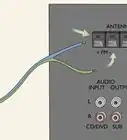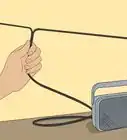This article was co-authored by wikiHow staff writer, Eric McClure. Eric McClure is an editing fellow at wikiHow where he has been editing, researching, and creating content since 2019. A former educator and poet, his work has appeared in Carcinogenic Poetry, Shot Glass Journal, Prairie Margins, and The Rusty Nail. His digital chapbook, The Internet, was also published in TL;DR Magazine. He was the winner of the Paul Carroll award for outstanding achievement in creative writing in 2014, and he was a featured reader at the Poetry Foundation’s Open Door Reading Series in 2015. Eric holds a BA in English from the University of Illinois at Chicago, and an MEd in secondary education from DePaul University.
There are 14 references cited in this article, which can be found at the bottom of the page.
This article has been viewed 222,488 times.
Learn more...
There are two ways that live broadcasts can reach your home TV: digital cable and analog signal. If you’re looking to get rid of your cable bill, you may be seeking out easy ways to pick those broadcast signals up for free. While there’s a popular hack out there that involves using your home’s electrical system to pick up broadcast signals, this isn’t actually a safe or functional way to go about this. Still, there are other options out there, so read on to learn more about cutting the cord and enjoying local TV!
Steps
What can I use instead of my home wiring?
-
1Buy an indoor TV antenna for the best results. If your goal is to get rid of your cable bill, investing in a $40-60 antenna is going to pay off big time. This is really the cleanest and safest way to get high-quality channels.[3] Your results will vary depending on where you live since the distance from your home to the broadcast signal will vary for each person, so look for an antenna with a 50–60 mi (80–97 km) range for best results.[4]
- If you go this route, remember that your TV has to be set to “antenna” or “analog” mode. You’ll need to run a channel search after connecting your antenna as well.[5]
- There are two types of signals—OTA (over the air) broadcast, and digital cable. With an antenna, you’ll only pick up OTA channels (which are usually channels 2 to 60 or so depending on the area). Still, you won’t have to pay for cable, so it’s hard to complain!
-
2You can try to use a paper clip if you live close to a station. If there’s an OTA channel you want to watch and you live within 1–5 miles (1.6–8.0 km) of the broadcast station, you can theoretically use an unpainted paper clip as an antenna.[6] Turn the power off, unplug your TV, and slide a point of your paperclip gently into the coaxial input on the back of your TV before running a channel scan.[7]
- So long as nothing is touching your paper clip, there’s no serious danger here. The current in the antenna port is so incredibly low that it won’t cause any problems. The only potential damage you may cause will occur when you shove a paper clip in the coaxial port.
- You can put the paperclip in a coaxial splitter and connect a coaxial cable to your splitter to reposition your “antenna” closer to a window or protect your coax port on the TV from damage.
- This will usually only work if your TV was made after 2005 and you don’t have concrete or stucco walls, which tend to block broadcast signals. You’re probably only going to get a handful of channels even if this works, though.
-
3You could try a wire coat hanger or electrical cord. Plug a coaxial cable into your TV’s antenna port. Grab an insulated electrical cord (do not plug it in) or an unpainted wire coat hanger and set it on the ground next to the TV. Position the pin on the end of the coaxial cable so that it rests on the bare metal of the cord’s prong or the wire hanger. Then, run your channel scan. You may be able to pick up a few channels this way![8]
- Again, your results here are not likely to be very good. If you don’t live close to the broadcast station, you’re unlikely to pick up any channels. This will also only work if your TV was manufactured after 2005 and you don’t have concrete or stucco walls.
- You don’t really need to worry about starting a fire or anything like that unless you try this with a power cord and you plug one of the ends in.
What kind of channels will I get with an antenna?
-
1It totally depends on where you live and what’s being broadcasted. If you’re over 60 miles (97 km) from any broadcast signals, you may not be able to pick anything up. However, if you live near a major city or in a well-populated area, there are probably dozens of broadcasts within range.[9]
- You can consult the FCC’s search tool to find which signals you’ll be able to pick up with an antenna. Visit https://www.fcc.gov/media/engineering/dtvmaps and enter your address or zip code to find a list of what you’ll pick up with an antenna.
-
2Buy a multi-directional UHF and VHF antenna for more channels. If you want the best bang for your buck, buy a VHF and UHF combination antenna to pick every broadcast signal up. These combo antennas are usually a little more expensive, but they’re worth it if you want variety. VHF-low refers to channels 2 through 6, while VHF-high includes channels 7 through 13. UHF broadcasts include 14 through 60 or so (the high end depends on where you live), so a combo antenna will get you everything.[10]
- Multi-directional antennas do not need to be adjusted to face the signals you want to pick up. If you want the best signal possible, pick one of these up.
- If you’re going the DIY route, your paper clip or coat hanger antenna is probably only going to pick up VHF channels.
- The number of a station does not always match the frequency of its broadcast. For example, you’d think that CBS 2 in New York City should broadcast over channel 2, right? TVs actually receive the frequency through channel 33.[11]
Community Q&A
-
QuestionWhere do I find a coaxial cable adapter for turning my home wiring into an antenna? Where do I find the part and what company makes it?
 wikiHow Staff EditorThis answer was written by one of our trained team of researchers who validated it for accuracy and comprehensiveness.
wikiHow Staff EditorThis answer was written by one of our trained team of researchers who validated it for accuracy and comprehensiveness.
Staff Answer wikiHow Staff EditorStaff AnswerThese adapters were never made by reputable companies. The premise behind using your home wiring as an antenna is deeply flawed. If you use one of these, you may permanently damage your TV, and it's extremely unlikely that you'll be able to pick channels up unless you live within 5 miles of the broadcast signal.
wikiHow Staff EditorStaff AnswerThese adapters were never made by reputable companies. The premise behind using your home wiring as an antenna is deeply flawed. If you use one of these, you may permanently damage your TV, and it's extremely unlikely that you'll be able to pick channels up unless you live within 5 miles of the broadcast signal. -
QuestionWhere can you buy an adapter in 2021? I tried major retailers but found no results.
 wikiHow Staff EditorThis answer was written by one of our trained team of researchers who validated it for accuracy and comprehensiveness.
wikiHow Staff EditorThis answer was written by one of our trained team of researchers who validated it for accuracy and comprehensiveness.
Staff Answer wikiHow Staff EditorStaff AnswerThose adapters were never safe in the first place, and it looks like most retail websites have stopped selling them.
wikiHow Staff EditorStaff AnswerThose adapters were never safe in the first place, and it looks like most retail websites have stopped selling them. -
QuestionCan I use a speaker wire for a TV antenna?
 wikiHow Staff EditorThis answer was written by one of our trained team of researchers who validated it for accuracy and comprehensiveness.
wikiHow Staff EditorThis answer was written by one of our trained team of researchers who validated it for accuracy and comprehensiveness.
Staff Answer wikiHow Staff EditorStaff AnswerThis is an interesting idea, and it could theoretically work for the same reason that the paper clip solution works. Unfortunately, much like the paper clip solution, you're very unlikely to get any kind of signal unless you live right next to the broadcast station. An actual antenna will only run you $30 or so, and it's going to be a much better solution.
wikiHow Staff EditorStaff AnswerThis is an interesting idea, and it could theoretically work for the same reason that the paper clip solution works. Unfortunately, much like the paper clip solution, you're very unlikely to get any kind of signal unless you live right next to the broadcast station. An actual antenna will only run you $30 or so, and it's going to be a much better solution.
References
- ↑ https://blog.solidsignal.com/tutorials/can-you-use-your-homes-wiring-as-an-antenna/
- ↑ https://blog.solidsignal.com/tutorials/can-you-use-your-homes-wiring-as-an-antenna/
- ↑ https://www.consumerreports.org/antennas/is-now-the-time-to-get-a-tv-antenna/
- ↑ https://www.techradar.com/news/best-indoor-tv-antennas
- ↑ https://www.disablemycable.com/quick-test/
- ↑ https://www.cordcuttersnews.com/can-i-really-use-a-paperclip-to-watch-over-the-air-tv-guest-post/
- ↑ https://youtu.be/GpmgeRnpG48?t=136
- ↑ https://www.disablemycable.com/quick-test/
- ↑ https://www.tvfool.com/?option=com_wrapper&Itemid=29
- ↑ https://youtu.be/IEZhdLC8j2w?t=25
- ↑ https://youtu.be/IEZhdLC8j2w?t=82
- ↑ https://youtu.be/U9ayZwa0qeQ?t=132
- ↑ https://www.groundedreason.com/watch-local-channels-without-cable/
- ↑ https://ispfamily.com/how-to-get-tv-reception-without-cable-or-an-antenna/
- ↑ https://swipeonidea.com/how-to-get-local-channels-on-samsung-smart-tv-without-antenna/
- ↑ https://youtu.be/IEZhdLC8j2w?t=9
